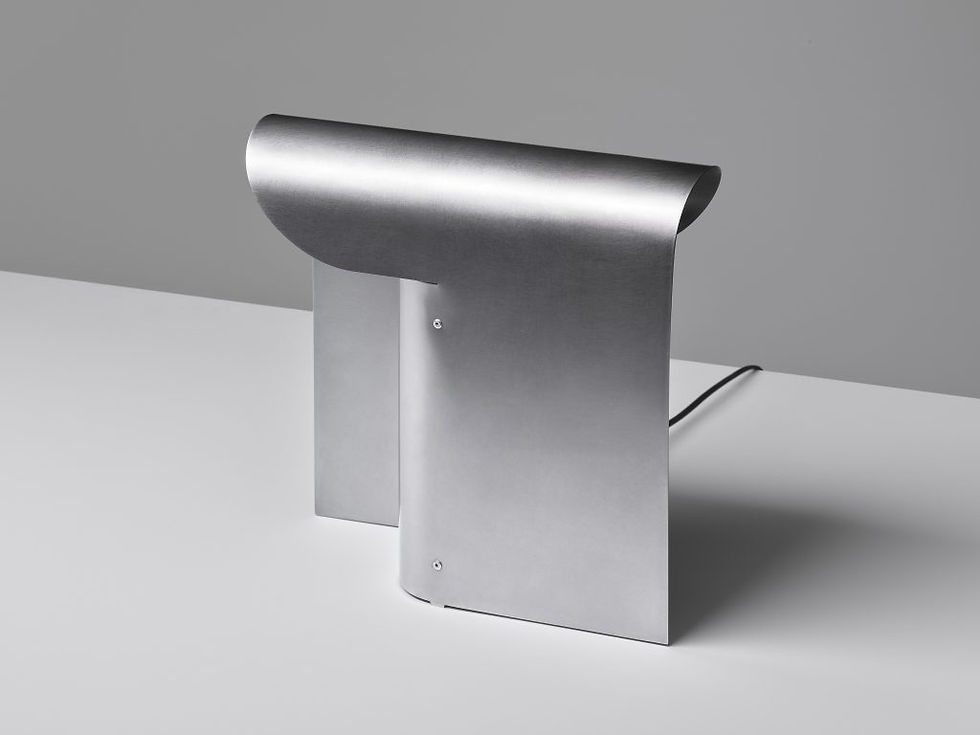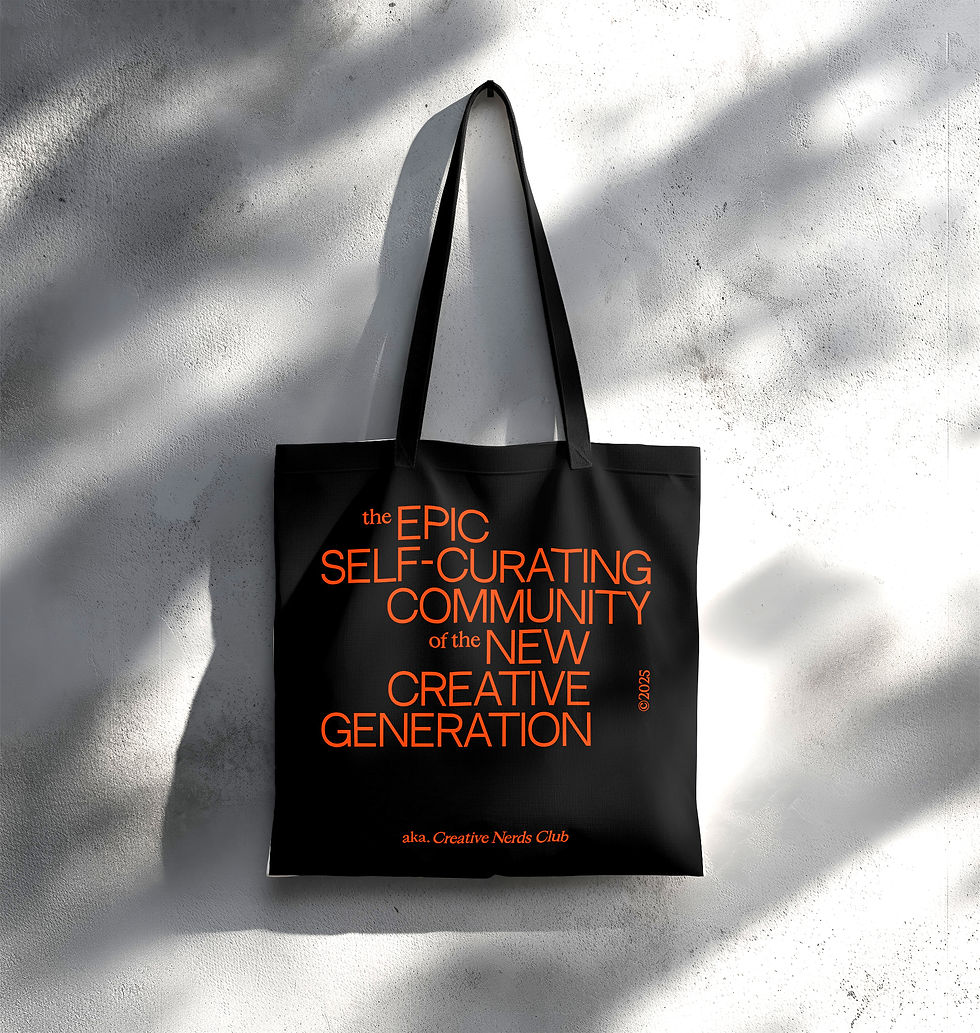Irene Molina | Visual Artist
- Onur Çoban

- May 30
- 5 min read
Updated: Jun 5
© Irene Molina
Irene Molina is establishing a new sculptural language with her works that straddle the transition between the digital and the physical. The artist combines 3D modelling, photogrammetry and industrial production techniques to translate digital aesthetics into material reality. The friction between forms, surfaces and materials is both the method and the subject of her practice.
We discussed with Irene the new aesthetic understanding shaped by the digital world, material experiments, and her recent projects.
Interview: Onur Çoban
Who is Irene Molina? Can you briefly tell us about yourself?
I'm a visual artist based in Madrid. I've always been fascinated by objects, their materiality, the way they occupy space, and how they transform over time. My father was a painter, so art was always present in my life, but my path wasn’t entirely straightforward. I was drawn to architecture and its power to shape environments, but I eventually studied Fine Arts with a strong focus on sculpture and physical materials.
Everything shifted when I tore my ACL. Unable to work in my studio for months, my only available tool was a computer. That’s when I started experimenting with 3D modeling. What began as a temporary solution soon became the foundation of my practice: a space where physical constraints disappear, allowing me to model and manipulate materialities that exist only in the digital realm. Since then, my work has lived between the digital and the physical, constantly exploring how technology reshapes our perception of objects and space.

© Irene Molina
“My work is a process of translation between dimensions. I explore the constant transition between the digital and the physical, scanning, modeling, and transforming objects in virtual environments before bringing them into the material world through 3D printing or industrial sculpture techniques.”
How would you define your art practice?
Beyond technique, these tools allow me to build a distinct visual language, marked by liquidity and digital aesthetics. I work with surfaces in constant flux, with forms that seem to shift between the organic and the synthetic. My work isn’t about simply replicating digital aesthetics in physical form but rather about understanding what happens in that translation—the distortions, the glitches, and the new material behaviors that emerge in the process.
This medium also lets me explore speculative narratives, using simulation and material experimentation as tools to question the relationships between technology, the body, and the environment.
Siamesas, Irene Molina, Photos @diegolozanorollan
What factors do you consider when researching materials or choosing materials for your new projects? Can you tell us a bit about the material choices in your work?
For me, materials are not just passive elements; they actively shape the meaning of my work. I am drawn to the tension between the digital and the physical, choosing materials that act as bridges between both worlds.
I often work with white PLA, a sustainable material with a glossy finish that plays with digital appearance, making the pieces appear almost unreal in physical space. The material is difficult to photograph and shifts dramatically depending on the light. I also use translucent resin, which mimics glass in appearance but allows for an incredibly high level of detail.
Additionally, I incorporate industrial materials like stainless steel, which contrast with organic forms. I am fascinated by synthetic materials how they simulate reality while distancing themselves from nature. In my installations, screens and digital elements exist alongside sculptures, acting as portals that extend physical objects into hybrid spaces where digital and material realities coexist.

Cosas No-Cosas, Irene Molina, Collaboration with @fundaciongala
Can you tell us a bit about the design and production process in your work? Are you closer to analogue or digital techniques?
My process is a constant dialogue between the digital and the physical. In the virtual world, objects have no weight, physics are flexible, and time is fluid. I work in a space where forms can float, stretch, or dissolve without restrictions.
But even though the digital environment allows me to construct freely, I still feel an instinctive connection to the physical. I’m fascinated by the moment when an object stops being pure data and becomes tangible matter. Sometimes, I start with physical objects, scanning them through 3D photogrammetry, while other times, my pieces originate purely as digital files.
My work exists in that friction between what remains virtual and what needs to take up space. This transitional state is where my practice comes to life.
Soho House Art Week Dinner x UVNT, Photos @carlosdelucass & @mariasantosphotography
Which of your works has excited you the most in terms of the design process and the final product?
Each project excites me in different ways. Whether through technical challenges, conceptual depth, or the way it materializes in space. However, Hypergarden, presented at the LUX Festival X Anniversary of La Térmica in Málaga, was particularly significant.
This installation transformed the garden into a hybrid landscape, where various devices. LEDs, screens, and holographic fans acted as portals for cyborg species interacting with the natural environment. Accompanied by a soundscape generated from field recordings and machine-processed sounds, the piece explored the coexistence of nature and technology, drawing inspiration from theorists like Haraway, Morton, and Bratton.
Seeing how these digital and organic elements coexisted, and how the audience engaged with this speculative ecosystem, made the project a living and ephemeral experience.
Hypergarden, Pulsa, Lux Festival, Photos @nicofaletty @loveladrillo @principedelmal
Can you tell us a little about the sources of inspiration behind your work? Who are the names you follow with curiosity in this field or in different disciplines?
I am inspired by systems in collapse, cycles of transformation, and uncertain futures. I am interested in terraforming, the speculative reconstruction of landscapes, and how we inhabit spaces in crisis. Cinema and literature play a key role in shaping my imagination.
I also closely follow the evolution of emerging technologies and how these tools can be integrated into creative processes. I’m drawn to what hasn’t happened yet. New materials, AI-generated art, and the shifting boundaries between the digital and the physical.
Artistically, I am influenced by the work of Mayte Gómez Molina, Andrea Munain, Audrey Large, Felina.H.DB, and Mit Borrás, as well as design studios like Takk and Casa Antillón, who work from hybrid and interdisciplinary perspectives.
"What if I am made of plexiglass?" Saatchi Gallery, Curated by Carmen Ballesta, UNTIE AGENCY
Are you excited for the future? What are your plans?
Yes, absolutely. Right now, I’m working on new collaborations with Taira at Cupra Garage in Madrid and preparing my first solo show Río y Meñaka. I’m also developing an intervention at the Hejduk Towers in the City of Culture of Galicia, a phygital project on technified nature, where I explore the relationship between sculpture and digital environments.
Additionally, I am collaborating on augmented reality projects, designing new ways to experience digital and virtual art. For now, I can’t reveal much more, but I’m excited about what’s coming and thrilled to be based in Madrid at this moment.

































































